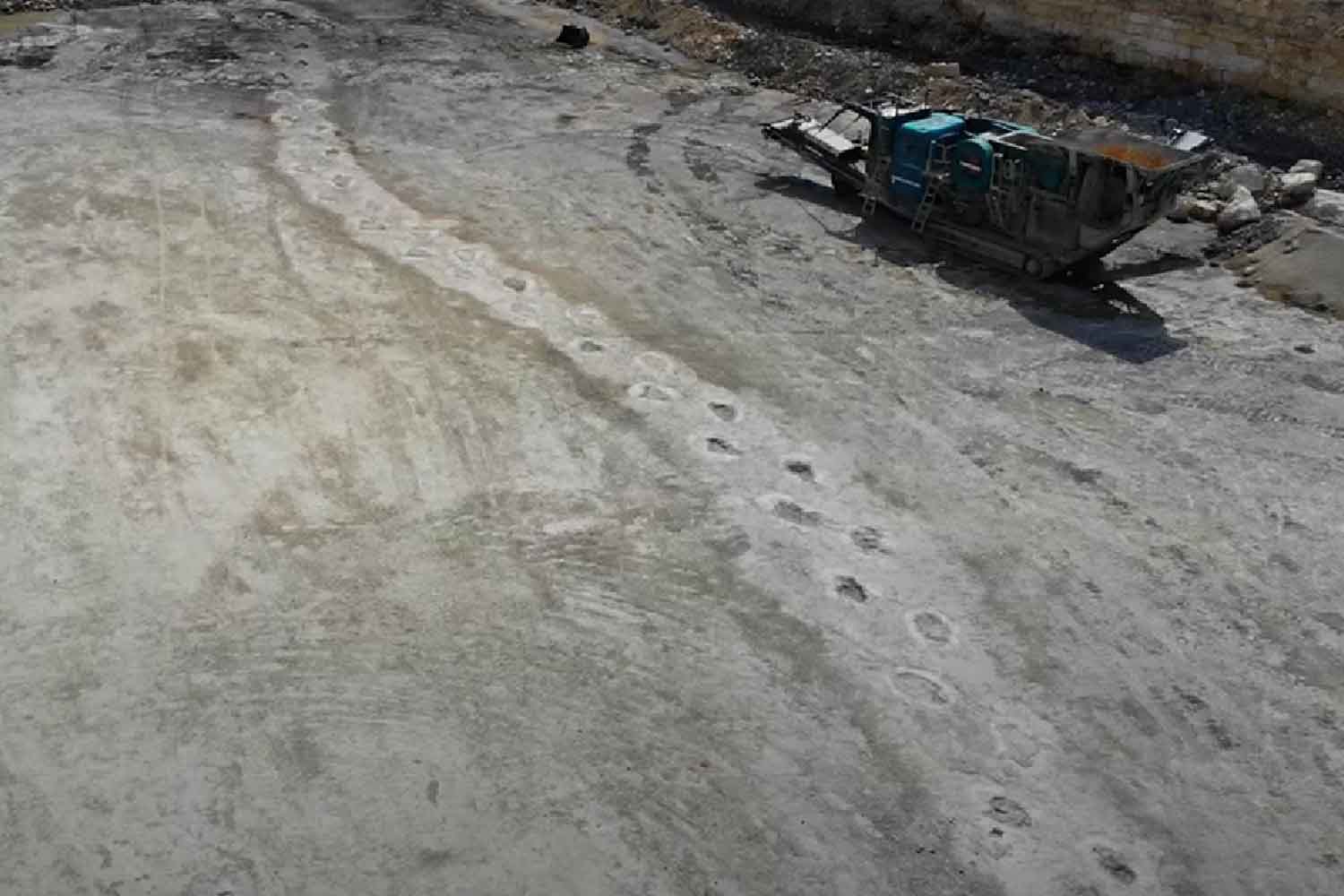A team of British researchers has uncovered a 220-meter dinosaur trackway in Oxfordshire, the longest ever found in Europe

Table of contents
In Oxfordshire, in the heart of England, a team of researchers has uncovered something extraordinary: the longest dinosaur trackway ever found in Europe. It measures an impressive 220 meters (722 feet) and dates back to approximately 166 million years ago, when this area was a muddy plain traversed by enormous long-necked sauropods.
The discovery was made at the Dewars Farm quarry, one of the most important sites along Britain’s so-called “dinosaur highway.” The excavations, conducted in summer 2025 by a team from the universities of Oxford, Birmingham, and Liverpool John Moores, involved over one hundred people including scholars, students, and volunteers.
A race against time to save the giants’ footprints
The work was far from simple. After an unusually hot and dry summer, the ground had hardened “almost like concrete,” recalls geologist Duncan Murdock from the Oxford University Museum of Natural History. For an entire week, the team had to excavate with extreme caution to avoid damaging the footprints, some of which measured up to one meter (3.3 feet) long.
During the investigation, researchers identified approximately 80 sauropod footprints crossing the site from north to south. Alongside the main trackway, three additional paths were discovered, one of which continues a series already identified in 2022.
But the real surprise was the sheer quantity of tracks: “We now know that dozens of individuals were moving through this area during the same period, perhaps as a herd,” explains Murdock. A discovery that changes our perception of sauropods from solitary giants to potentially social animals.
The lost world emerges from fossilized mud
The footprints weren’t the only testimony to the past. During the excavation, remains of marine invertebrates, fragments of fossilized plants, and even a crocodile jaw emerged. All elements that help reconstruct the environment where these animals lived: a coastal muddy plain, crossed by rivers and subject to tides, where giant herbivores left traces destined to last millions of years.
In some areas, three-toed footprints were also identified, probably belonging to Megalosaurus, a carnivorous dinosaur that lived in the same places. Signs that tell the story of a rich and dynamic ecosystem, where herbivores and predators crossed paths along the same natural routes.
To better understand the formation of the footprints, scholars collected sediment samples from beneath and inside the fossilized cavities: analyses that could reveal details about the Jurassic climate and soil composition.
A precious legacy for science and Earth’s memory
This trackway represents a unique document of its kind. Not only because of its length — the longest ever recorded in Europe — but also because it offers a direct window into dinosaur behavior. The arrangement of the footprints allows scientists to study the gait, direction, and speed of sauropods, as well as possible deviations or interactions between individuals.
Each footprint is a fragment of history, a literal impression of time. And thanks to the joint work of universities and volunteers, this “dinosaur highway” continues to tell a fundamental chapter of life on Earth.
Source: University of Birmingham
